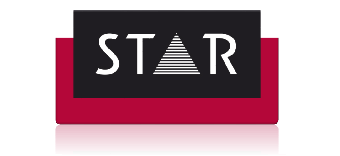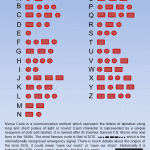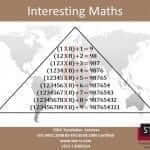How to write for translation
Today we’re discussing “writing for translation”.
There are a few tips that will help you write and design better brochures, websites and software for translation.
So where should we start?
1. Text in translation will typically expand.
For example, German typically is 30-50% longer than English.
So when you design a brochure and you have your text in place you should be aware that text will get much longer after translation. To make it easier it’s actually better to use plenty of white space in your document. For example, the word “cancel” in German is “abbrechen”. 9 letters versus the original 6. So you can see it’s a longer word which will require more space on screen. So if you have design software and you’ve got this text “Cancel” in a button, the button will have to be resized after translation. This will happen often with several words.
Text Expansion Issues is probably the primary thing to remember about writing for translation.
2. Letters can change size in some fonts.
Lets look at a very simple case: A “w” is actually wider than an “i”. So in certain fonts characters are actually wider. So what can happen is that when you design text which looks nice in your source when you translate it because you using different letters the length and layout may change. Instead of text being 50 pixels wide it might be 65 pixels.
So that means the document layout can change. Where you’ve got pictures or images you may have to move or resize them after translation.
If you can take this into consideration when you design your document or your website it will make it a lot easier to translation.
3. Sometimes a message can change during translation
There is a McDonald’s example where they use the phrase “I’m lovin’ it”.
In Chinese that doesn’t really come across well because “love” is a very sensitive word in Chinese culture and it would only be said between very special people and wouldn’t be used publicly.
So they translated it into Chinese terms which literally means “I like it” so it’s a different sentence. The meaning or intent is the same but the words are different.
So to work well if you are designing a new brochure it’s always a good idea to show your translation company the draft source files before your finish so that you can get their input on it.
They should be able to give you advice in terms of text, image or layout for your target market.
4. Alliteration is almost impossible to translate.
Many documents come across our desk that use smart alliteration for marketing impact. These can’t be translated. So its best not to use alliteration. If you really have to to though, you will need to transcreate an alternative in the translation. This will take time and is costly.
5. Finally, be careful with abbreviations.
Abbreviations should be used very sparingly especially with technical documents. If you do use them, you should always use the full explanation of the term first and then the abbreviation. That way when someone is reading the document they know exactly what it is.
Just because you use a term every day does not mean all your customers will understand it.
For example in Ireland and UK, you have VAT tax, but in France it is TVA so it’s a different abbreviation with a different meaning. So sometimes it’s difficult to translate terms if we don’t have the full meaning. VAT and TVA are very common but if you have specific industry terms and you use abbreviation, give your translation agency the full explanation of the terms so they can use the correct and appropriate term for you in the target language.
A little care and attention can make your translation better.
Today we want to talk about “writing for translation”.
There are a few tips we can give to help you design better brochures, websites and software for translation.
So where should we start?
One of the most important factors is
1. that the text in translation will typically expand.
For example, German typically is 40-50% longer than English.
So when you design a brochure and you have your text in place you should be aware that text will actually grow during the translation process. So to make it easier it’s actually better to design plenty of white space around your document.
For example, word “cancel” in German is “abbrechen”. 6 letters versus 9. So you can see it’s a longer word which will require more space on screen.
So if you have design software and you’ve got this text “Cancel” in button, the button will have to be reisized after translation. And it can happen very often in quite a number of sentences.
That’s probably the primary thing to remember about writing for translation.
2. Fonts can also change size as well.
So a very simple case:
A “w” is actually wider than an “i”. So in certain fonts characters are actually wider. So what can happen is that when you design text which looks nice in your source when you translate it because you using different letters the length and layout may change.
So that means the document layout can also change so where you’ve got pictures or images you will have to move or resize them after translation.
If you can take this into consideration when you design your document or your website it will make it a lot easier to translation.
3. Sometimes a message can actually change during translation
There is a McDonald’s example where they use the phrase “I’m lovin’ it”.
In Chinese that doesn’t really come across well because “love” is a very sensitive word in Chinese culture and it would only be said between very special people and wouldn’t be used publicly.
So they translated it into Chinese terms which literally means “I like it” so it’s a different sentence. The meaning or intent is the same but the words are different.
So to work well if you are designing a new brochure its always a good idea to show your translation company the draft source files before your finish so that you can get their input on it.
They should be able to give you advice in terms of text, image or layout for your target market.
4. Finally, be careful with abbreviations.
Abbreviations should be used very sparingly especially with technical documents.
If you do use them, you should always use the full explanation of the term first and then the abbreviation. That way when someone is reading the document they know exactly what it is.
Just because you use a term every day does not mean all your customers will understand it.
For example in Ireland and UK, you have VAT tax, but in France it is TVA so it’s a different abbreviation with a different meaning. So sometimes it’s difficult to translate terms if we don’t have the full meaning. VAT and TVA are very common but if you have specific industry terms and you use abbreviation, give your translation agency the full explanation of the terms so they can use the correct and appropriate term for you in the target language.
A little bit care of attention can make your translation better and the process a lot easier for everyone.
Thank you very much.
STAR Translation



